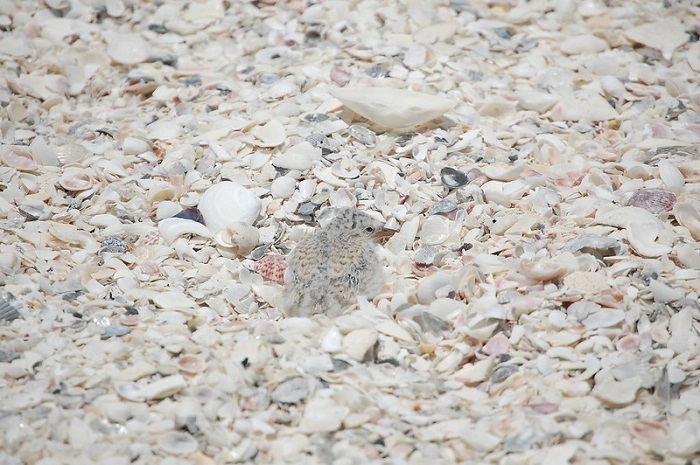Help us conserve beach nesting birds
Florida Fish & Wildlife Conservation Commission sent this bulletin at 05/21/2020 10:13 AM EDT
(Having trouble viewing this email? View it as a Web page.)
May 21, 2020
Photos available on the FWC’s Flickr site: https://www.flickr.com/photos/myfwcmedia/sets/72157629322942682/
Suggested Tweet: It’s nesting season for Florida’s waterbirds. Learn how you can help @MyFWC protect vulnerable species: https://content.govdelivery.com/accounts/FLFFWCC/bulletins/28cbd9f

Least tern chick by Carol Rizkalla/FWC.
Help us conserve beach nesting birds
The Florida Fish and Wildlife Conservation Commission (FWC) is reminding the public that it’s waterbird nesting season. Many Floridians and guests are returning to the state’s beaches to celebrate Memorial Day weekend but this is also a critical time for Florida’s vulnerable wading birds, shorebird and seabird populations. By respectfully sharing our beaches and waterways with these birds, people can help ensure their survival.
Shorebirds and seabirds, such as snowy plovers and black skimmers, build shallow nests on the ground. Their eggs and chicks are well camouflaged and can easily be missed and even stepped on. Wading birds, such as herons, egrets and pelicans, are also nesting now. They typically nest in mangroves and on tree islands around the state. When people come too close to their nests, they can cause birds to abandon their nesting sites, leaving eggs and chicks vulnerable.
“Startling birds might not seem like a big deal, but disturbing shorebirds and seabirds can actually be deadly,” said FWC Florida Shorebird Alliance Coordinator, Shea Armstrong. “If a mother bird is forced to leave her nest, her eggs or chicks are left behind where they can be eaten by predators, exposed to the hot sun, or trampled by unsuspecting beachgoers.”
Boaters and beachgoers can make a big difference for Florida’s vulnerable nesting shorebirds and seabirds by following these simple guidelines:
- Keep your distance from birds, on the beach and on the water. If birds become agitated or leave their nests, you are too close. Birds calling out loudly and dive-bombing are signals to back off.
- Respect posted areas. When possible, stay at least 300 feet from a posted nesting area. Avoid entering areas marked with signs for nesting birds and use designated walkways.
- Do not enter Critical Wildlife Areas. CWAs are established to give wildlife the space needed for nesting, roosting and foraging, and they are clearly marked with signs or buoys to alert boaters to areas that are closed to public access.
- Avoid intentionally forcing birds to fly or run. This causes them to use energy needed for nesting, and eggs and chicks may be left vulnerable to the sun’s heat or predators. Teach children to let shorebirds and seabirds rest instead of chasing them, and encourage friends and family to do the same. Shorebirds and seabirds outside of posted areas may be feeding or resting and need to do so without disturbance.
- It is best to leave pets at home but if you bring them to the beach, keep them leashed and avoid shorebird and seabird nesting areas. Pets are not permitted on most beaches, including state parks, so always check and be respectful of local rules when preparing for a day at the beach.
- Keep the beach clean and do not feed wildlife. Food scraps attract predators, such as raccoons and crows, which can prey on shorebird eggs and chicks. Litter on beaches can entangle birds and other wildlife.
- Spread the word. Let your friends and family know how important it is to give shorebirds space and share the message on social media!
- Report disturbance of nesting birds to the FWC’s Wildlife Alert Hotline at 888-404-FWCC (3922) or by texting Tip@MyFWC.com. You can also report nests that are not posted to our Wildlife Alert Program.
For more information on how you can help Florida’s shorebirds, go to MyFWC.com/Shorebirds or FLShorebirdAlliance.org.
To learn more about Florida’s CWAs or confirm CWA locations in your area, visit MyFWC.com/CWA.

